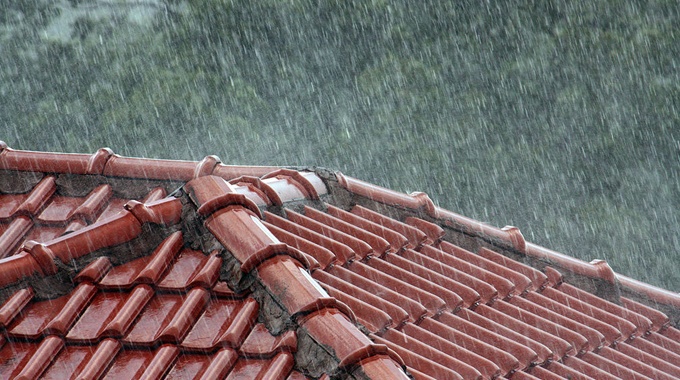
When you are harvesting rainwater, there many things you need to consider to ensure your water stays as clean as possible. One popular concern is if the roof on your house or shed is suitable for rain harvesting. In this article, I researched 5 popular types of roofs and gave my recommendations on how each of them compare. Although any roof will work, there are some risks you should know about.
Types of Roofs and how They Compare for Rainwater Harvesting:
- Clay or Concrete - Clay or concrete roofs can be a bit dangerous because they can easily grow algae quickly. This is mainly due to concrete and clay tiles having a porous surface. This means that this type of roof can trap moisture which will breed algae.
Pro tip: Your roof will be safer if it is painted with a special sealant or paint. This will prevent algae growth on these porous surfaces.
- Terracotta - In warmer climates, algae and moss will also grow on terracotta roofs. However, this will be a lot slower than concrete. This type of roof is suitable as long as it is kept clean. Cleaning is often done by spraying the roof down with chlorine.
- Metal - A properly coated metal roof is good for drinking water collection. However, if the metal is a bare zinc surface this can leach into your water and cause contamination.
Pro tip: When using a metal roof for rain harvesting, there are some concerns regarding roof components. Roofs with copper flashings can cause discoloration of porcelain fixtures.
- Composite or Asphalt - Asphalt shingle roofs (especially when new) may have particles that wash off the roof. There is a high risk of this debris getting into your water. It is recommended that the roof is washed down regularly and a first flush system installed.
Pro tip: Because of leaking toxins, composite shingles are not suitable for potable systems.
- Wood - Wood roofs can grow Algae and bacteria in the open pores so it is very important to keep clean. I would not recommend you use a wood roof for potable water because of leaching compounds. The water collected off a wood roof is best used for your irrigation system.
Why is Clean Water Important in a Water Tank?
Being fussy about the cleanliness of the rainwater running your roof ultimately means cleaner water coming out of your tank. Clean water being stored in your water tank is important especially because of safety. If you are using this rainwater for drinking or even showering, algae or other contamination can make you sick. To learn more about this, read this helpful article on drinking water out of your water storage tank.
Hand-picked content for you: Can you drink from Plastic Water Storage Tanks?
To be sure the water that comes off your roof is suitable, the best thing is to get a sample tested. Often county health departments will help you test for bacteria or nitrates. If not, you can have your water tested by a state certified laboratory. You can find one in your area by calling the Safe Drinking Water Hotline at 800-426-4791 or visiting www.epa.gov/safewater/labs.


